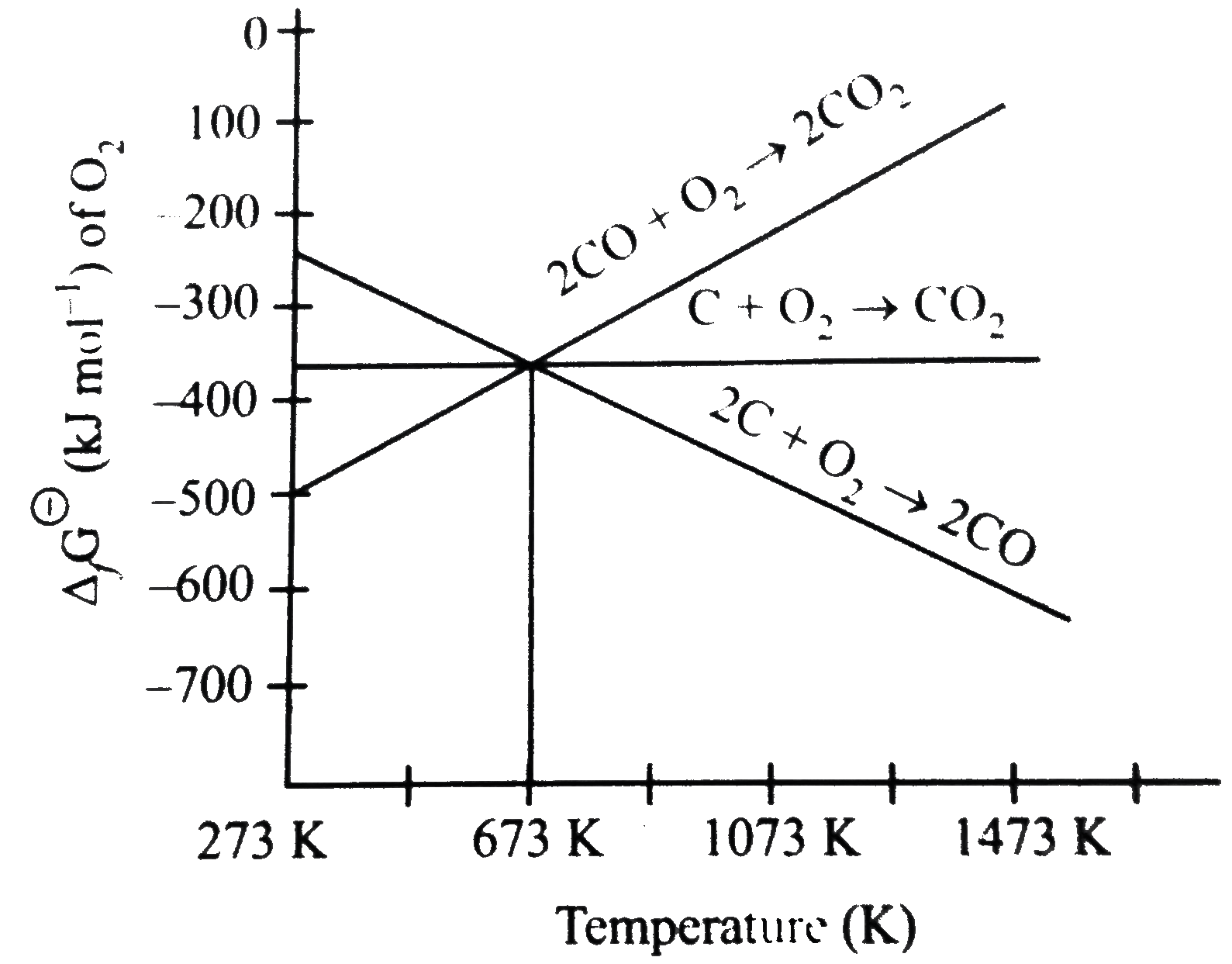Out of C and CO, which is a better reducing agent at 673 K ?
Video Solution
Text Solution

When carbon reacts with dioxygen two reactions are possible.
The CO thus produced can also react with O2 to form CO2
2COg+O2→2CO2 …(iii)
In the first reaction the volume of CO2 produced is the same as that of O2 used hence △S is very small and △fGɵ does not change with temperature. Thus the graph of △fGɵ against T is almost horizontal.
The second reaction produces two volumes of CO for every one volume of O2 used. Thus △S is positive and hence △fGɵ becomes increasingly negative as the temperature increases. Consequently, C,CO line on the ellingham diagram slopes downwards . The third reaction produces two volumes of CO2 for every three volumes of reactants used. Thus △S is -ve and hence △fGɵ becomes incresingly +ve as the temperature increases consequently, CO,CO2 line on the ellingham diagram slopes upwards The three lines cross at 673K. Below this temperature formation of CO from C is energetically more favourable. In ther words, below 673K, both C and CO can act as reducing agents but since CO can be more easily oxidised to CO2 than C to CO2, therefore, below 673K. CO is a more effective reducing agent than C. However, above 673K, CO is more stable and hence its oxidation to CO2 is less rapid than that of C to CO2 therefore, above 673K C is better reducing agent than CO.
|
Updated on:21/07/2023
Topper's Solved these Questions
- BOOK - CENGAGE CHEMISTRY ENGLISHCHAPTER - APPENDIX INORGANIC VOLUME 2EXERCISE - Short Answer Type179videos
APPENDIX INORGANIC VOLUME 2
- BOOK - CENGAGE CHEMISTRY ENGLISHCHAPTER - APPENDIX INORGANIC VOLUME 2EXERCISE - Short Answer Type179videos
APPENDIX INORGANIC VOLUME 2
- BOOK - CENGAGE CHEMISTRY ENGLISHCHAPTER - ALIPHATIC AND AROMATIC ALDEHYDES AND KETONESEXERCISE - Archives Subjective26videos
ALIPHATIC AND AROMATIC ALDEHYDES AND KETONES
- BOOK - CENGAGE CHEMISTRY ENGLISHCHAPTER - AROMATIC COMPOUNDS AND ALKYL AND ARYL HALIDES EXERCISE - Archives Subjective Type4videos
AROMATIC COMPOUNDS AND ALKYL AND ARYL HALIDES
Similar Questions
Out of C and CO, which is a better reducing agent at 673K?
View Solution(a) Which solution is used for the leaching of silver metal in the presence of air in the metallurgy of silver ?
(b) Out of C and CO, which is a better reducing agent at the lower temperature rangein the blast furnace to extract iron form the oxide ore ?View Solution
Knowledge Check
- Question 1 - Select One
From the Ellingham graph between Gibbs energy and temperature , out of C and CO which is a better reducing agent for ZnO ?
ACarbonBCOCBoth of theseDNone of these - Question 2 - Select One
Which of these is a reducing agent ?
ACrO3/H+BKMnO4CLiAlH4DO3 - Question 3 - Select One
Which can act as a reducing agent ?
ACOBCO2CSnO2DPbO2
